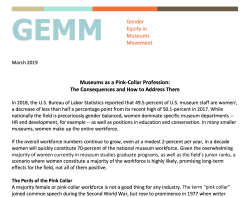Saying What You Mean & Getting Better at What You Do
Posted: June 12, 2017 Filed under: active listening, Authentic, Communication, Leadership, Museum, museum career, Nonprofit Leadership, Self-Aware, Work Habits | Tags: museums, nonprofit, soft skills, workplace culture 1 Comment
This post is a two-parter. First, it’s about saying what you mean. This is a big deal for museum leaders who often think they communicate clearly, only to find, when things go wrong, how lame their skills are. But whether you occupy the fancy office and go to lunch with trustees or not, you still need good communication skills. Here are five things you need:
- Be a good listener: Say you’re a curator. A colleague asks why boxes in your storage area are stacked close to the heating pipes. There are 1,000 ways to answer the question from “All our storage is inadequate and this is the best of many bad choices,” to “This is temporary while we empty another area,” to “Gosh, I was so anxious about the mold I found last week, closer to the ceiling seemed like a good thing.” But what if you don’t hear the question? What if what you hear is an attack on your skills as curator and your personal worth? The answer you give in that situation is likely to be different, less helpful, and since you feel personally attacked, may escalate a fairly innocuous situation.
- Don’t withhold information: Sometimes we don’t say what we mean because we’re locked in a silent power struggle with a colleague. That person may be struggling too in which case only a minimum of information gets through. Remember, work is work. You all serve the museum, heritage or arts organization. Focus on what the other person needs, provide the best answer you can, and surprise, surprise, your next interaction may be different, but in a good way.
- Do not babble: Do not go down conversational rat holes. Channel your inner Hemingway. Be simple, concise, and specific.
- Try to check your ego at the door: Great communicators make everyone else feel like they’re the only people in the room. Why? Because they communicate with authenticity and care. Try pausing for a moment or two before answering a question. Reflect on whether the question is about you and your skill level or whether it’s about the collection items next to the ceiling.
- When you’re wrong, say you’re wrong: If you snapped at the curator about the boxes, we hope you’re self aware enough to figure out what happened and apologize. Conversely, if you’re the curator, who responded as if you’d been slapped rather than as if a concerned colleague also cared about the collection, apologize. Don’t wait. Don’t write absurd narratives in your head about why this isn’t the right time to talk. Just do it. A real apology offered human-to-human builds trust. There’s no better ingredient for workplace communication.
And now to getting better at what you do: There’s likely a book waiting to be written on the perfectionism found in museums. It casts a pall over everything, putting dampers on experimentation and innovation because staff feels there is no room for risk. The results of too much perfectionism are often spectacularly mediocre.
We here at Leadership Matters constantly harp on reading widely so here are two very different articles. The first is from Outside Magazine on Getting Better. Yes, it’s about exercise, but it’s also full of stuff that applies to life without spandex and a water bottle. Learning to manage challenges, to break work into manageable chunks, to put the cell phone aside–those are skills that apply in the museum workplace just as much as the gym. And for a completely different voice, here is writer Jamaica Kincaid with advice on how to live and how to write. She too advocates less cell phone time and more focus. She’s also about learning how not to write crap, and she advocates not taking yourself too seriously. She is a writer after all. She lives on her imagination.
You are museum, humanities, and culture folk. You spend time trying to make art, living things, and objects speak. You need your imagination too.
Here in America’s Northeast we’re at the peak of the long days. That’s more time to pause, think about more skillful communication, and get better at what you do. Use it. Get better.
Joan Baldwin










Thanks Joan, love the communication tips